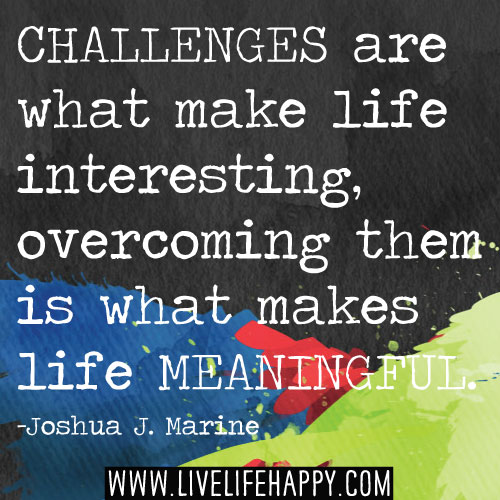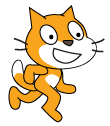A few days ago I blogged about composite classes (
here). I really enjoy the challenges associated with composite classes but I don't always get it right. *Sigh* My year 3/4 class has recently finished off a short unit of work on
shape. To be more accurate: we did a short unit of work about 3D shapes (including making 3D models) and composite shapes. To be even more accurate: we did a short unit on 3D shapes. What should it have been about? Well, if we're going by the
ACARA maths document you'll need to go back a couple of sentences and then add in something about comparing the area of regular and irregular shapes by informal means. (To be completely honest though, I never had any plan to include area in this unit of work so it's not like I missed it out... I just didn't plan to teach it, when I really should have.)
Having said all of that, we had fun and nearly everyone met nearly all (if not all) of the intended learning outcomes. Phew!
 |
I let them pull the shape
from the bag when they
were ready to draw it. |
 |
The feely bags were student
'run' after the initial modelling,
which allowed me to float
and observe everyone. |
I introduced the unit with feely bags. I modelled reaching in, finding a solid polyhedron and then describing it using the mathematical language I was looking to see the children use by the end of the unit. I also asked the children to record their shape(s) in their maths workbooks using a drawing and labels. It was a great pre-assessment task as it gave me the chance to see (and hear), very quickly, where everyone sat on the learning spectrum.
We continued to explore the properties and features of 3D shape both as mathematical concepts but also as building blocks in our environment. It helped everyone to see that EVERYTHING is 'made up of shapes', both 2D and 3D. When we looked more carefully we were able to identify that 3D shapes can be described, in part, by the 2D shapes that make them. This lead to more conversation about composite shapes.
The activity you can see in this photo was offered with a range of entry points. Ultimately, at every level, the students were asked to engage with the identification and nomenclature of 3D features
and their possible nets. Solid polyhedron were available to help visualise how the nets might fold up to create the shapes. When I took this photo the student was manipulating the cube whilst talking about which part of the cube the net would next cover. The learning process was actually VISIBLE!
 |
I never even knew about the Lego programme!
It's AWESOME |
In the lead up to our assessment task I offered the students the opportunity to show me they could build/draw a 3D model on the computer. I left the task as open as that - they could use whatever programme, app or web2.0 tool they liked and create whatever model they wanted so long as they were able to explain their understanding to me either on the screen or verbally. (The Australian Curriculum for Maths is pretty specific about giving children the opportunity to learn and demonstrate their learning with and without technology, and as I've already shared with you
here and
here I am seeking to integrate technology into my maths programme more.)
I provided a puzzle page with 36 boxes; in each box was either a 3D shape, a net, or a number (most of which were the corresponding number of faces, edges or vertices with a few red herrings thrown in to sort the wheat from the chaff so to speak). The children needed to match the shape with its corresponding net
and work out what the numbers represented and present this information visually. They found it a lot more challenging than I expected but then again, they also enjoyed it a lot more than I expected. I asked early finishers to create a 'Who am I?' riddle for a 3D shape of their choice. Some of these were a hoot to read and showed great awareness of 3D shapes in the environment.
 |
I love the creativity
in their presentations! |
 |
Some of the riddles.
Simple lift-the flap presentation. |
The end assessment task was to use any material they could find in the classroom to create and label a model of an identifiable 3D shape. I'm not in love with this task, and there's plenty of room for improvement but it served its purpose this time. Here are a few of the results at various stages of completion.
 |
| Simple and to the point... |
 |
| I love this! |
 |
| This one is NEVER going to fall apart. |
So, you can see that the unit was pretty skewed towards 3D shapes and didn't really do composite shapes very well at all. I'm pretty disappointed that I didn't manage that too well, but know that I'll do better next time. More focus on composite shapes was required... I wonder whether this needed to be addressed in parallel?
Tell me about your well intentioned but not completely successful plans... (Please tell me I'm not alone!)
This relates to the following Australian Professional Standards for Teachers...
Standard 1.5 Differentiate teaching to meet the specific learning needs of students across the full range of abilities
Standard 2.1 Content and teaching strategies of the teaching area
Standard 2.2 Content selection and organisation
Standard 2.3 Curriculum, assessment and reporting
Standard 2.5 Literacy and numeracy strategies
Standard 2.6 Information and communication technologies (ICT)
Standard 3.2 Plan, structure and sequence learning programmes
Standard 3.3 Use teaching strategies
Standard 3.6 Evaluate and improve teaching programmes
Standard 5.1 Assess student learning
(You'll note that I've said that this
relates to these standards, which isn't to say that in this instance I was outstandingly successful in each of these standards... Clearly!)































